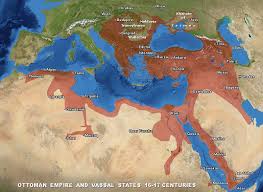The Rise and Fall of Empires: A Comprehensive Overview
The annals of human history are replete with the rise and fall of empires, each leaving an indelible mark on the course of civilization. These empires, in their zenith, have shaped cultures, economies, warfare, and politics across the globe. However, they also experienced decline and eventual collapse due to various reasons. This answer will delve into some of the greatest empires in human history, the reasons for their rise and fall, and the lessons we can glean from their stories.
1. The Roman Empire: The Roman Empire is often considered one of the greatest empires in history due to its vast territorial reach and enduring cultural influence. Its rise can be attributed to a combination of military strength, administrative efficiency, advanced infrastructure, and a legal system that promoted social stability. However, over time, internal strife, economic instability, military overreach, and invasions by Germanic tribes led to its decline and eventual fall in 476 AD.
2. The Mongol Empire: The Mongol Empire was the largest contiguous land empire in history. Its rise was primarily due to the military genius of Genghis Khan and his successors. Their superior horse-riding skills and innovative warfare strategies allowed them to conquer vast territories. However, after reaching its peak under Kublai Khan, the empire began to decline due to internal divisions, succession disputes, and rebellions within its conquered territories.
3. The British Empire: At its height, it was said that “the sun never sets on the British Empire.” Its rise was fueled by naval supremacy, industrial revolution-driven economic strength, and administrative prowess. However, two World Wars severely drained Britain’s resources. Rising nationalism in colonized countries led to widespread decolonization movements resulting in the empire’s gradual dissolution by the late 20th century.
4. The Ottoman Empire: The Ottoman Empire was one of the longest-lasting empires in history. Its rise can be attributed to its strategic location between Europe and Asia, military might, and administrative efficiency. However, military defeats, internal strife, economic problems, and the rise of nationalist movements led to its decline and eventual dissolution after World War I.
5. The Persian Empire: The Achaemenid Persian Empire was one of the most influential in ancient history. Its rise was due to the leadership of Cyrus the Great, who established a centralized bureaucratic government and a massive network of roads. However, internal rebellions and the invasion by Alexander the Great led to its downfall.
From these examples, we can glean several lessons.
First, military strength is often a key factor in an empire’s rise but overreliance on it can also lead to its downfall.
Second, efficient administration and infrastructure are crucial for maintaining stability and prosperity within an empire.
Third, economic strength is vital for an empire’s sustenance but economic instability can trigger its decline.
Lastly, internal strife and external threats are common factors contributing to an empire’s fall.
In conclusion, the rise and fall of empires is a complex process influenced by a multitude of factors. While each empire is unique in its trajectory, there are common patterns that emerge from their stories. Understanding these patterns not only provides us with valuable historical insights but also helps us better comprehend our present geopolitical landscape.
